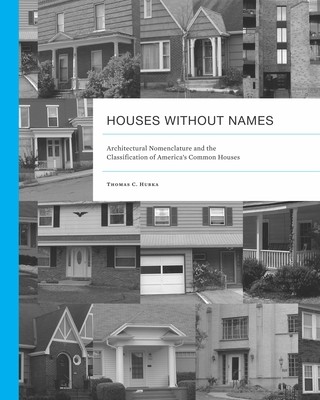
- We will send in 10–14 business days.
- Author: Thomas C Hubka
- Publisher: Univ Tennessee Press
- ISBN-10: 1572339470
- ISBN-13: 9781572339477
- Format: 20.3 x 25.2 x 0.8 cm, minkšti viršeliai
- Language: English
- SAVE -10% with code: EXTRA
Reviews
Description
In countless neighborhoods across America, the streets are lined with houses representing
no established architectural style. Many of the 80 million homes in the United States
today have only loose-fitting, general names like ranch, duplex, bungalow, and flat.
Most, however, cannot even be identified by these common names, much less by an
architectural type such as Colonial, Italianate, or Queen Anne. The few regionally
recognized vernacular terms-- shotgun, Cape (Cod), three-decker, and the like--remain
exceptions rather than the rule. In this innovative, copiously illustrated guide, Thomas C.
Hubka considers why most ordinary, working-class houses lack an adequate identifying
nomenclature and proposes new ways to name and classify these anonymous structures,
shedding a fresh light on their role in the development of American domestic culture and
its housing landscape.
these common homes constitute the largest portion of American housing in all regions
and historic periods. Without classification, these dwellings tend to be left out of histories
of American building, neglected in preservation surveys and plans, and ignored when it
comes to considering their impact on American culture. Current methods of interpreting
common houses need not be replaced, Hubka shows, but only modified to include a
broader, more complete spectrum of common dwellings. As Hubka explains, by applying
an order of census and a floor-plan analysis, scholars can adequately characterize
the actual homes in which most Americans live, particularly in recent times after the
widespread growth of suburban homes. Based on years of field observations, measured drawings, and surveys of regional
house types, this handbook provides a working vocabulary for the study and appreciation
of America¹s common houses and will prove useful to preservationists, academics, and
architects, as well as owners and residents of America¹s most ubiquitous residences.
EXTRA 10 % discount with code: EXTRA
The promotion ends in 21d.23:01:25
The discount code is valid when purchasing from 10 €. Discounts do not stack.
- Author: Thomas C Hubka
- Publisher: Univ Tennessee Press
- ISBN-10: 1572339470
- ISBN-13: 9781572339477
- Format: 20.3 x 25.2 x 0.8 cm, minkšti viršeliai
- Language: English English
In countless neighborhoods across America, the streets are lined with houses representing
no established architectural style. Many of the 80 million homes in the United States
today have only loose-fitting, general names like ranch, duplex, bungalow, and flat.
Most, however, cannot even be identified by these common names, much less by an
architectural type such as Colonial, Italianate, or Queen Anne. The few regionally
recognized vernacular terms-- shotgun, Cape (Cod), three-decker, and the like--remain
exceptions rather than the rule. In this innovative, copiously illustrated guide, Thomas C.
Hubka considers why most ordinary, working-class houses lack an adequate identifying
nomenclature and proposes new ways to name and classify these anonymous structures,
shedding a fresh light on their role in the development of American domestic culture and
its housing landscape.
these common homes constitute the largest portion of American housing in all regions
and historic periods. Without classification, these dwellings tend to be left out of histories
of American building, neglected in preservation surveys and plans, and ignored when it
comes to considering their impact on American culture. Current methods of interpreting
common houses need not be replaced, Hubka shows, but only modified to include a
broader, more complete spectrum of common dwellings. As Hubka explains, by applying
an order of census and a floor-plan analysis, scholars can adequately characterize
the actual homes in which most Americans live, particularly in recent times after the
widespread growth of suburban homes. Based on years of field observations, measured drawings, and surveys of regional
house types, this handbook provides a working vocabulary for the study and appreciation
of America¹s common houses and will prove useful to preservationists, academics, and
architects, as well as owners and residents of America¹s most ubiquitous residences.


Reviews